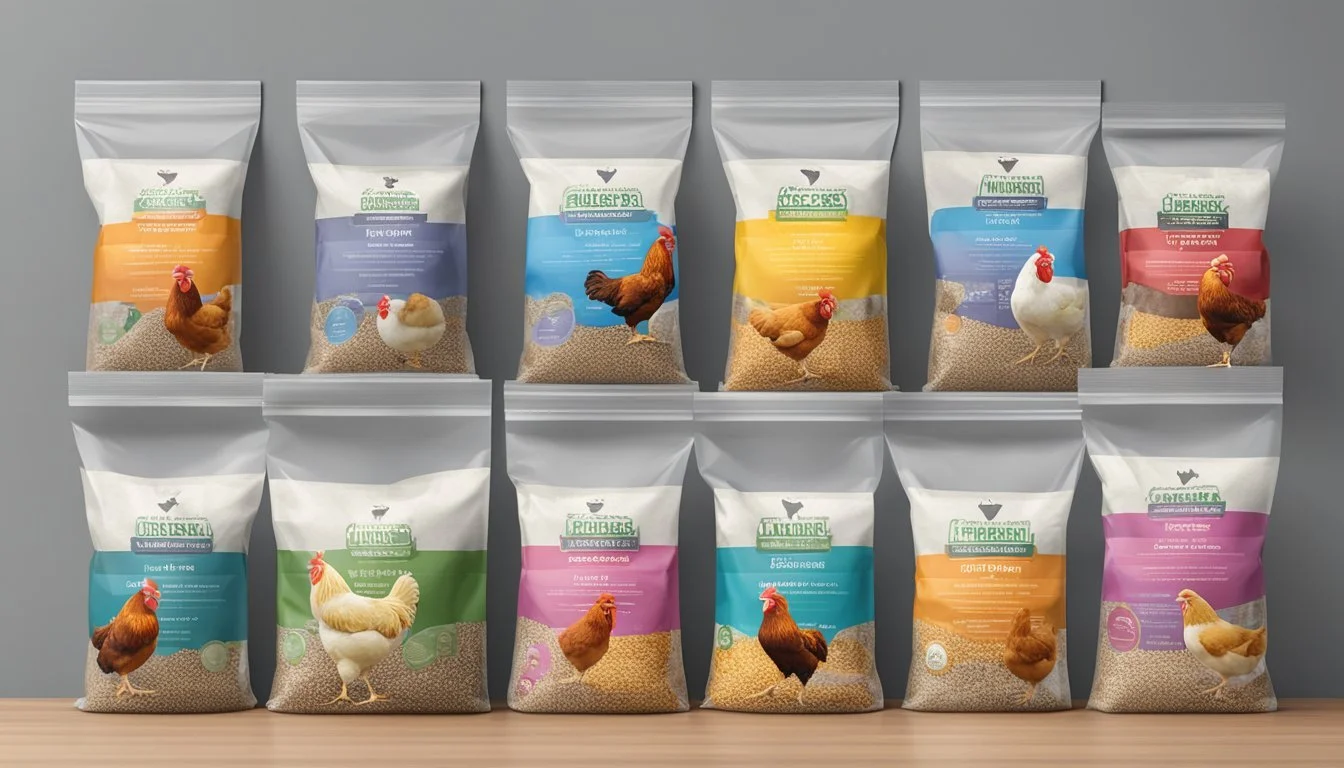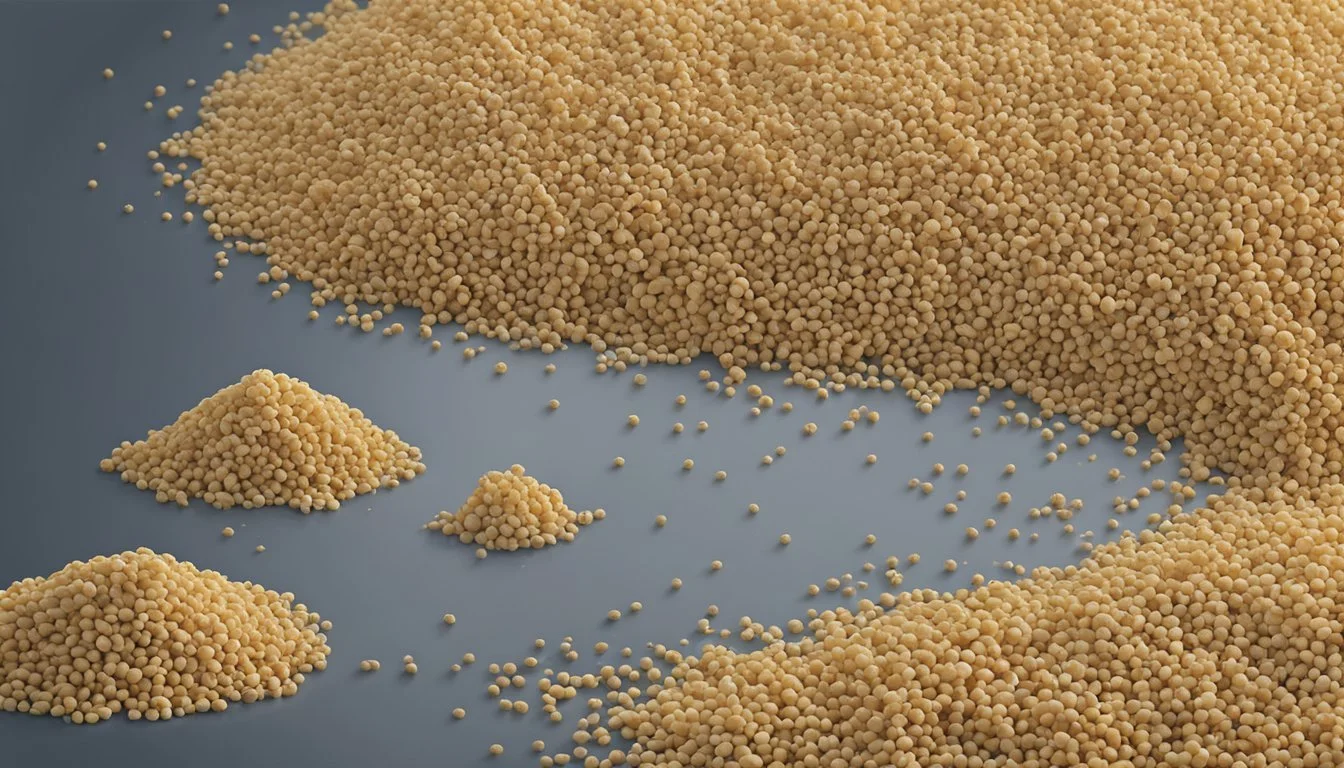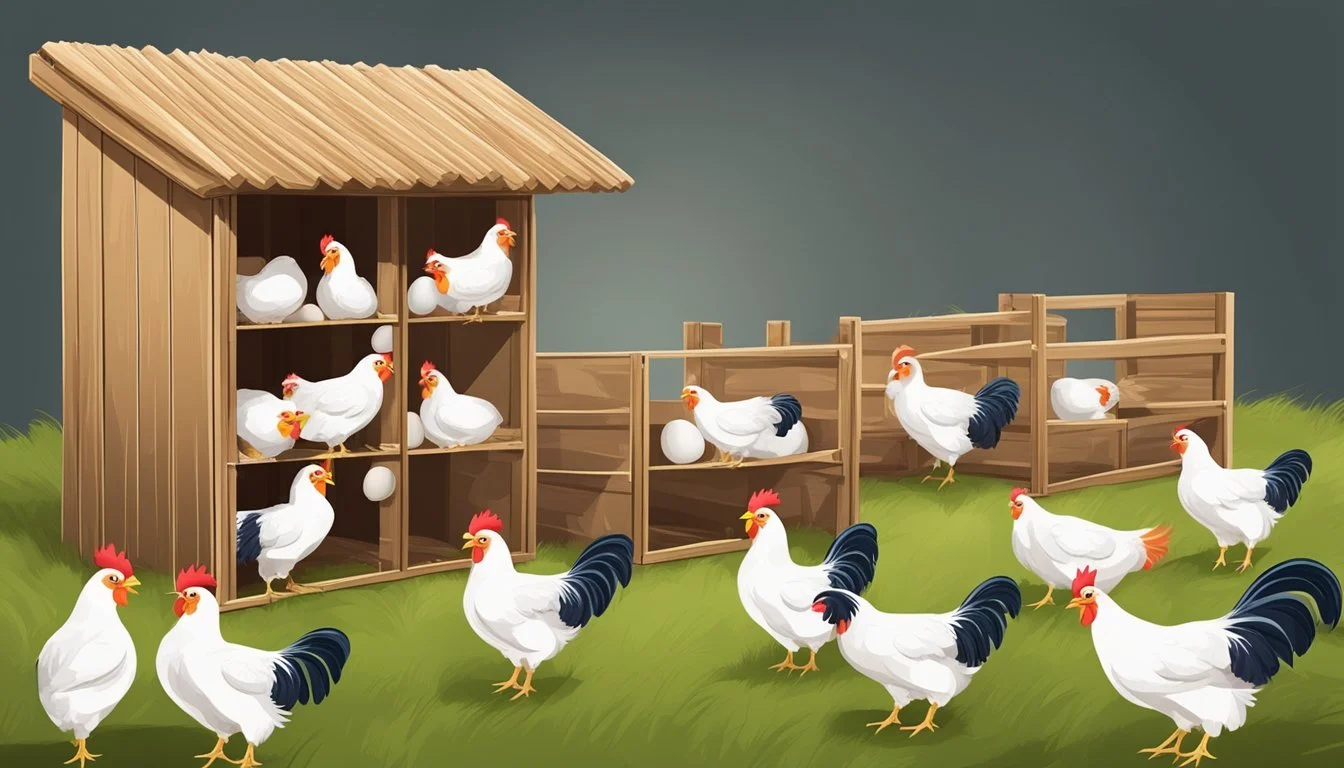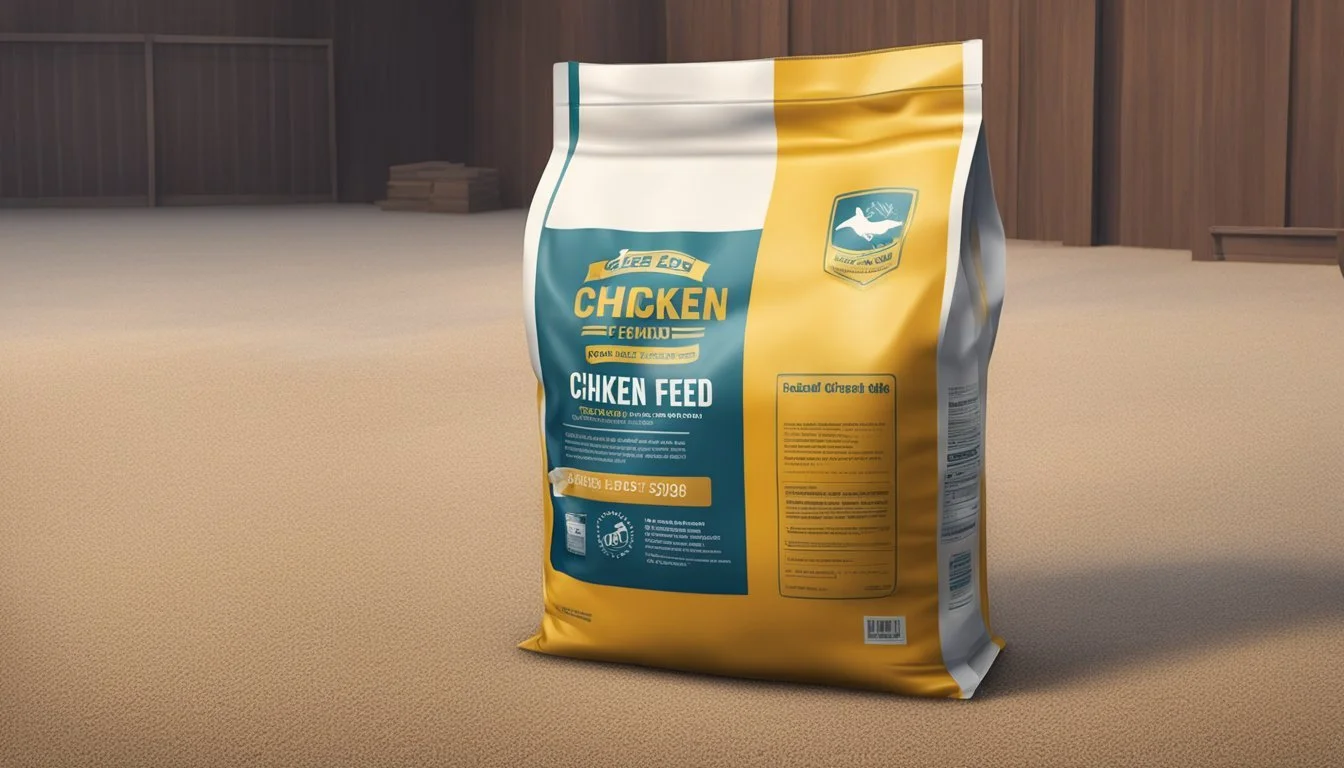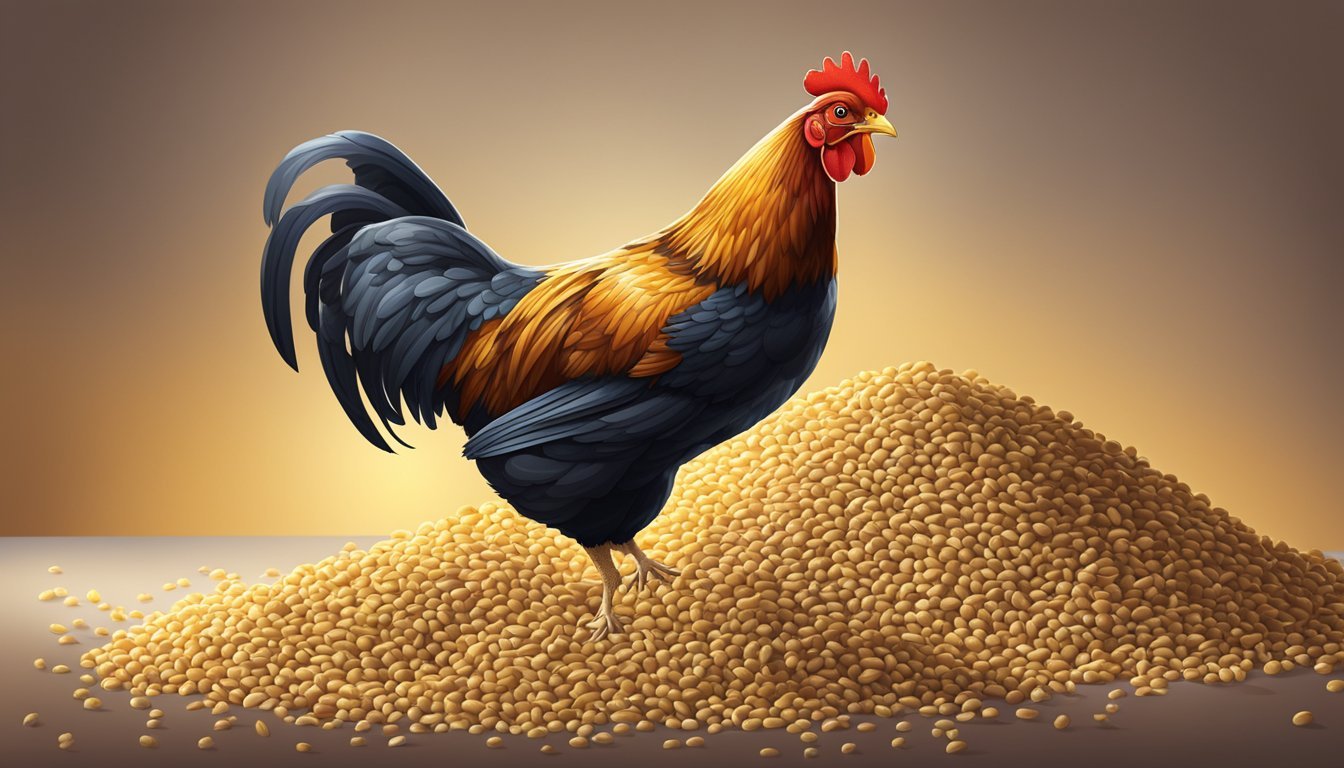How Can I Tell If My Chicken Feed Is of Good Quality?
Assessing Nutritional Value and Freshness
Determining the quality of chicken feed is crucial for the health and productivity of your flock. Good quality feed not only supports the nutritional needs of the chickens but also contributes to their overall well-being and egg production. Chicken feed typically consists of a mixture of grains, proteins, vitamins, and minerals. The precise formulation varies depending on the type of chicken, whether they are layers, broilers, chicks, or adults.
The content of the feed strongly influences its quality. For example, layers require feed that is high in calcium to ensure strong eggshells, while all chickens benefit from a balanced blend of amino acids for healthy growth and maintenance. It is not only the ingredients that matter but also how they are processed. Feeds that include non-chemically processed soybean and non-GMO ground corn, as praised by Prairie’s Choice, indicate a level of care in the manufacturing process. Moreover, feeds should be free from additives and fillers that offer no nutritional value.
Consumers looking for high-quality chicken feed might select products with organic or natural certification, guaranteeing that the chickens are receiving feed free from pesticides and artificial ingredients. Additionally, some feeds incorporate animal and vegetable fats and oils, important for energy and overall health. It is essential that chicken owners familiarize themselves with the nutritional needs of their specific type of chicken and choose a feed that meets those requirements, such as those containing adequate levels of calcium and phosphorus for laying hens.
Understanding Chicken Feed Quality
Selecting high-quality chicken feed is crucial for the health and productivity of your flock. It ensures optimal nutrition for different stages of growth and egg production. The quality of chicken feed can be assessed by examining its nutrition content, ingredient compositions, and the form in which it is provided, such as mash, pellets, or crumbles.
Nutrition Content
Chicken feed quality is heavily dependent on its nutrition content. A well-balanced feed should contain a blend of proteins, vitamins, and minerals. For instance, laying hens require approximately 3.5%-4% calcium for strong eggshells, while the desired protein content varies depending on the chicken's life stage—ranging from 16-18% for layers and 20-24% for broilers. Ensuring these nutritional needs are met is pivotal for maintaining the health and productivity of poultry.
Ingredient Compositions
The ingredient compositions of chicken feed provide insight into its quality. High-quality feed will typically consist of a variety of grains, providing essential carbohydrates for energy. It will also incorporate amino acids and sources of fats for additional energy and to help with body temperature regulation. It's important to avoid feeds that contain fillers or non-nutritive additives which do not contribute to the chickens' dietary needs.
Feed Form: Mash, Pellets, Crumbles
The physical form of chicken feed—mash, pellets, or crumbles—does not inherently affect the nutritional content but can influence the feed's utility and wastage. Pellets help reduce waste and are easy to manage, while crumbles are often preferred for younger chickens because they are easier to eat. Mash is a finer variant and can be consumed easily but may lead to higher waste levels. The choice between these forms should consider the age and feeding behavior of the chickens as well as the owner's preference for convenience and cost.
Types of Chicken Feed
Selecting the right type of chicken feed is crucial for the health and productivity of the poultry. The feeds are designed to provide balanced nutrition throughout different life stages and dietary needs of chickens, with options catering to specific preferences like organic or non-GMO constituents.
Starter, Grower, and Layer Feeds
Starter feed: Designed for chicks from hatch until about six weeks of age, it is formulated with high protein content, typically around 20%-25%, to support rapid growth and development. Grower feed follows the starter, targeted for chickens from six weeks until they start laying eggs, with a slightly reduced protein level compared to the starter.
Layer feed: Once hens begin laying eggs, their nutritional needs shift, requiring a feed with higher calcium content for strong eggshell formation. Protein levels in layer feed are balanced to support egg production without causing excessive weight gain.
Medicated Versus Non-Medicated Feeds
Medicated feed: This type of feed contains amprolium to prevent coccidiosis, a common parasitic disease in chickens. It's important not to give medicated feed to laying hens as it can affect the eggs.
Non-medicated feed: For poultry keepers who prefer a natural approach, non-medicated feed is free from added antibiotics or coccidiostats. It's suitable for all life stages, provided that chickens are kept in sanitary conditions with a low risk of disease.
Organic and Non-GMO Options
Organic feed: Certified organic feeds must contain ingredients that are free from synthetic pesticides, fertilizers, and genetically modified organisms (GMOs). They also can't contain by-products or artificial preservatives.
Non-GMO feed: This feed ensures that the grains and seeds such as soy and corn included in it are not genetically altered, catering to those looking to avoid GMOs in their chickens' diet. However, non-GMO does not always mean organic; it's essential to verify if the product also meets organic standards.
In conclusion, the type of feed chosen should align with the chicken's life stage, health considerations, and the keeper's values regarding organic and non-GMO produce.
Physical Quality and Feed Presentation
High-quality chicken feed is paramount for optimal poultry health and productivity. The physical characteristics of feed, such as appearance and texture, alongside its freshness and shelf life, are essential indicators of its quality.
Appearance and Texture
When assessing the quality of chicken feeds, one should inspect the feed's uniformity. Pellets should be intact and consistent in size, as crumbling pellets can lead to selective feeding and nutrient imbalances. Similarly, crumbles ought to be free from excess dust, which can affect the respiratory system of the birds. The presence of whole grains within the feed suggests a variety in texture, which can be beneficial for the natural foraging behaviors of chickens.
Freshness and Shelf Life
Freshness is a crucial aspect of feed quality. Fresh feed will have a natural and pleasant smell; any off odors may indicate spoilage or the presence of contaminants. The shelf life of chicken feed is influenced by storage conditions and packaging. Feed should be stored in a cool, dry place to prevent mold growth and oxidation, which can degrade the nutritional content and palatability. It is important to check the production and expiration dates when purchasing feed to ensure it's as fresh as possible.
Impact on Hen Health and Egg Production
Quality chicken feed plays a pivotal role in hen health and egg production, impacting factors such as eggshell quality and overall well-being.
Eggshell Quality
Eggshells are a clear indicator of nutritional status. The calcium content in feed is crucial; it strengthens eggshells and prevents breakage. Adequate levels of calcium, in conjunction with vitamin D and phosphorus, are essential. Hens also require amino acids, particularly methionine, as these are the building blocks for protein synthesis which is vital for the development of strong eggshells.
Overall Hen Well-being
The overall health of hens is intrinsically linked to the quality of their diet. Feed rich in essential nutrients such as protein and omega-3 fatty acids ensures the production of high-quality eggs. Moreover, the diet must be balanced to support a healthy immune system, which directly affects egg production. Stressful conditions can lead to reduced feed intake, negatively impacting a hen's health and the quantity and quality of eggs they produce. Nutrients like amino acids are not only necessary for eggshell quality but also for the hens’ vitality.
Feed Additives and Nutritional Supplements
Good quality chicken feed includes a balance of essential additives and nutritional supplements to promote optimal poultry health. These include a range of vitamins and minerals, as well as other dietary supplements such as probiotics and enzymes.
Vitamins and Minerals
Chicken feed should provide a comprehensive blend of vitamins and minerals to ensure the birds' well-being. Vitamin deficiencies in chickens can lead to a host of health problems. For instance, Vitamin E is crucial for the functioning of a chicken's reproductive and nervous systems. Minerals like calcium and phosphorus are vital for bone development and eggshell quality. A balanced intake of these nutrients is achieved through proper formulation of the feed which can be determined through nutritional analysis.
Key Vitamins: Vitamin A, B12, D3, and E
Essential Minerals: Calcium, Phosphorus, Magnesium
Calcium Supplements: Oyster shell or crushed eggshell can be offered to layer hens for additional calcium.
Probiotics, Enzymes, and Other Supplements
Probiotics and enzymes are often added to chicken feed to enhance gut health and nutrient absorption. These supplements help maintain a healthy gut flora, which can improve feed efficiency and boost the immune system. Probiotics introduce beneficial bacteria into the digestive system, while enzymes facilitate the breakdown of feed components, aiding in maximum nutrient extraction. Amino acids, the building blocks of proteins, are also supplemented; for example, methionine is crucial for feather growth and overall health.
Probiotics: Aid in digestion and improve gut health.
Enzymes: Assist in breaking down nutrients for better absorption.
Amino Acids: Essential for protein synthesis and growth.
Proper Storage and Handling of Chicken Feed
Storing chicken feed properly is crucial to maintain its quality and extend its shelf life. One should store feed in a cool, dry place to prevent mold and deterioration. High humidity levels are detrimental as they encourage fungal growth which can ruin the feed.
Metal or plastic containers with tight-fitting lids are ideal for storage. They not only keep the feed dry but also secure it from pests and rodents which may otherwise contaminate it. It's also advisable to keep these containers off the ground to avoid any moisture seepage.
When using chicken feeders, regular cleaning is imperative to prevent the build-up of old feed that can attract pests or become moldy. Routine inspection of the feed's condition is recommended before refilling feeders. A sign of good quality chicken feed is the absence of clumps or an unusual smell, indicating it is free from moisture and has been stored correctly.
Finally, it is essential to track the chicken feed’s expiration date. While most feeds have a shelf life of several months, improper handling can shorten this duration. Using feed in chronological order, based on when it was purchased, ensures that older feed is used before it potentially loses nutritional value or becomes unsafe.
Storage Checklist: Container Type
Recommended Action: Metal or plastic with a sealable lid
Storage Checklist: Location
Recommended Action: Cool, dry place away from direct sunlight
Storage Checklist: Off the Ground
Recommended Action: Elevated on pallets or shelves
Storage Checklist: Expiry Date
Recommended Action: Check and use feed before its expiration
Storage Checklist: Feeder Maintenance
Recommended Action: Clean regularly and check for feed quality
Through attentive storage and handling, one can ensure their chicken feed remains of the highest quality, which in turn supports the health and productivity of the poultry.
Environmental and Ethical Considerations
Quality chicken feed is not solely judged by its nutritional content but also the environmental and ethical impacts of its production. Consumers should assess feed based on its sustainability, its effect on animal welfare, and whether it aligns with organic farming principles.
Sustainably Sourced and Eco-Friendly Feeds
Sustainably sourced chicken feed prioritizes environmental health by using ingredients that are produced in ways that do not deplete resources. Organic feeds are often preferred as they are free from synthetic pesticides and GMOs, reducing the environmental toll. Non-GMO feeds are also a popular choice for consumers looking to avoid genetically modified ingredients. It is vital to look for products that are verified USDA Certified Organic as they adhere to strict guidelines regarding sustainability and ingredient sourcing.
Animal Welfare and the Role of Antibiotics
Ethical considerations in chicken feed involve ensuring the wellbeing of poultry. Feeds that are free from growth hormones and unnecessary antibiotics support animal welfare by promoting natural growth and reducing the risk of antibiotic resistance. The inclusion of antibiotics should be carefully considered and used only when medically necessary, not as a growth promoter. Consumers can identify feeds that focus on animal welfare by looking for certifications and claims on the packaging though it is always wise to verify those claims with reliable information.
Feeding Practices and Ration Management
The quality of chicken feed plays a pivotal role in the health and performance of poultry. Effective feeding practices and precise ration management ensure that the birds receive the optimal nutrition required for their specific breed and life stage.
Calculating Feed Rations
When calculating feed rations, it's important to consider the bird's age, breed, and purpose. For instance, growing chicks require starter feed with a high protein content, often around 18-20% for regular chicks, and up to 24% for meat breeds. Transitioning to grower feed sees a reduction in protein to about 20% which adequately supports their continued development. When chickens progress to laying hens, their diet should switch to layer feed that typically contains about 16% protein, supporting consistent egg production. Broilers, bred specifically for meat production, require diets with higher energy that often include a finisher diet with around 18% protein to promote desirable weight gain.
Feeding Different Breeds and Ages
Feeding practices must be adjusted to cater to the diverse nutritional requirements of different breeds and ages. For example, meat birds such as broilers gain weight rapidly and need more energy from their diet compared to laying hens. In contrast, ducks often require feed with a higher niacin content. Young chicks need a diet rich in protein to support their swift growth, unlike roosters or older chickens that can sustain themselves on a maintenance diet with lower protein. It's also critical to provide an appropriate mix of vitamins and minerals in the rations to support the overall health and vitality of the flock.
Alternative Feeding Methods
Exploring alternative feeding methods such as fermentation and incorporating natural supplements offers benefits for chicken health and nutrition. These techniques can enhance the digestibility and nutrient availability of the feed.
Fermented Feed
Fermenting chicken feed can improve its nutritional value by breaking down antinutrients and increasing beneficial bacteria. Here's how to ferment feed correctly:
Step 1: Place feed into a container, such as a five-gallon bucket, and cover it with water—about 3 inches above the feed level.
Step 2: Stir the mixture thoroughly and let it sit for 24 hours in a cool place.
Step 3: After fermentation, feed your chickens the soupy mixture. It should smell sour but not rotten.
Alternative Chicken Feed offers a guide on fermentation process for chicken feed.
Supplementing with Vegetables and Insects
Chickens require a varied diet rich in vitamins and proteins. Vegetables such as lettuce and kale provide essential nutrients, while insects like grubs offer a protein-rich supplement.
Vegetables: Offer a variety of chopped greens daily to ensure vitamin intake.
Insects: Protein supplements can come from mealworms or crickets, which are easy to cultivate or purchase.
For instance, seeds from fruits, often discarded, can be a vital source of nutrients for chickens. Chickens can greatly benefit from eating seeds, parts of fruits, or scraps of vegetables like lettuce or kale you might normally throw away.
Conversely, insects such as mealworms are not only high in protein but are also simple to raise or can be bought for added convenience, making them an excellent choice for supplementing chicken diets.
Understanding Grit and Its Importance
When selecting high-quality chicken feed, understanding the role of grit is crucial. Grit is a composite of hard, insoluble particles that are necessary for a chicken's digestive health. As chickens do not have teeth, they rely on grit to grind down their food in the gizzard, an organ that functions as the bird’s mill.
Types of Grit
Insoluble Grit: Typically made from flint or granite, this type of grit remains in the gizzard to aid in grinding food.
Soluble Grit: Commonly consisting of oyster shells or limestone, this grit dissolves in the bird’s digestive system providing calcium, critical for the formation of strong eggshells.
The importance of grit can't be overstated. Without it, chickens can suffer from poor digestion and nutrient absorption. Generally, there are two types of grit to consider:
Insoluble Grit: Essential for all chickens, it stays in the gizzard for a long time and helps break down the food mechanically.
Soluble Grit: This serves a dual purpose; while it aids in digestion, it also provides essential calcium for laying hens, leading to healthier eggs.
Chicken owners should ensure that their birds have constant access to an appropriate type of grit. Shell grit, which is primarily composed of crushed oyster shells or limestone, is ideal for laying hens due to the high calcium content.
Chickens intuitively know when they need grit and how much to consume. It doesn’t take long for a chicken owner to recognize that providing quality grit is as fundamental as ensuring they have clean water and a balanced diet.
Selecting the Best Chicken Feed Brands
Choosing the right chicken feed for your backyard chickens is paramount to their health and productivity. It's crucial to opt for brands that have a strong reputation for high-quality ingredients and nutritional value.
Top-Rated Options
When it comes to top-rated chicken feed, one brand that stands out is Prairie's Choice Non-GMO Backyard Chicken Feed. It is not only favorably reviewed for its non-GMO status but also for its commitment to high-quality ingredients without chemically processed soybean feed. Another brand that receives high praise is Small Pet Select Chicken Layer Feed, known for meeting the needs of laying hens at all stages.
Prairie's Choice: Their feed features a blend that offers essential nutrients while avoiding GMO ingredients, catering to health-conscious poultry owners.
Small Pet Select: This feed focuses on layers, providing them with a balanced diet crucial for egg production.
Identifying Quality Brands
When determining what makes a best chicken feed brand, look for ones that provide comprehensive nutritional profiles. Ingredients in quality feeds often include sufficient protein, essential amino acids, and appropriate levels of calcium for strong eggshells.
Non-GMO feed signals a commitment to natural growth without genetic modifications, appealing to owners who prefer feeds that foster a more organic lifestyle for their flock. The Naturally Free Organic Layer Feed is an example of a product that embodies these qualities through a blend of organic ingredients tailored to the nutritional needs of laying hens.
Feeds like these embody the preferences of poultry enthusiasts who want the best for their backyard chickens, merging both high standards for nutritional content and ethical farming practices.
Monitoring Chicken Health and Feed Efficacy
To gauge the quality of chicken feed and its effects on poultry health, certain indicators should be closely observed:
Physical Appearance: A visual assessment of the chickens can reveal a lot about their overall health. Feathers should appear glossy and full, indicating a diet rich in essential nutrients. Dull or patchy feathers may suggest nutritional deficiencies.
Egg Production: The number of eggs laid is a direct reflection of dietary adequacy. A well-balanced feed supports higher laying rates. If egg production drops, this may signal a need to reassess the feed's nutritional content.
Behavior: Chickens should exhibit natural behaviors such as scratching and foraging. Inactivity or listlessness can be a sign of poor gut health or other dietary issues.
For a feed's effectiveness in supporting the digestive and immune systems, probiotics and prebiotics play a crucial role. These components aid in maintaining a balanced gut microbiota, essential for nutrient absorption and disease resistance.
Observation Checklist:
Health Aspect: Feathers
Indicator: Glossy and full
Notes: Lackluster feathers may indicate poor nutrition.
Health Aspect: Egg Production
Indicator: Consistent and high
Notes: Variations can signal dietary deficiencies.
Health Aspect: Behavior
Indicator: Active and energetic
Notes: Lethargy could point to digestive problems.
Health Aspect: Fecal Quality
Indicator: Firm and well-formed
Notes: Loose or abnormal droppings suggest gut health issues.
Regularly monitoring these factors helps ensure the chickens are healthy and that their feed is effectively meeting their nutritional needs. A feed adjustment may be necessary if there are persistent health concerns despite proper management practices.


